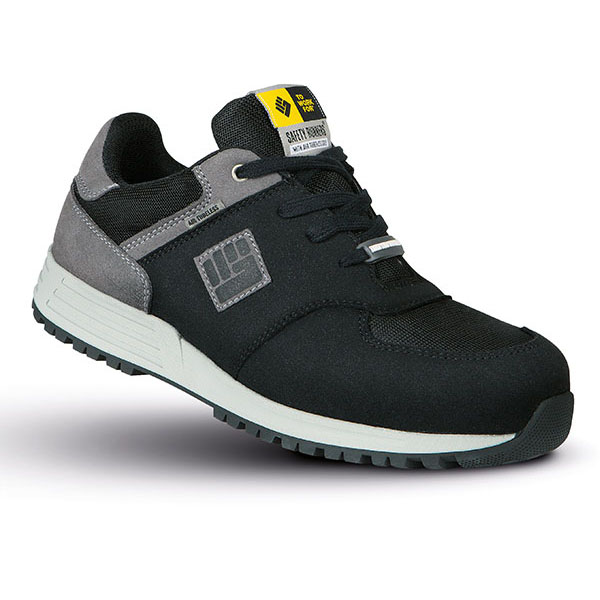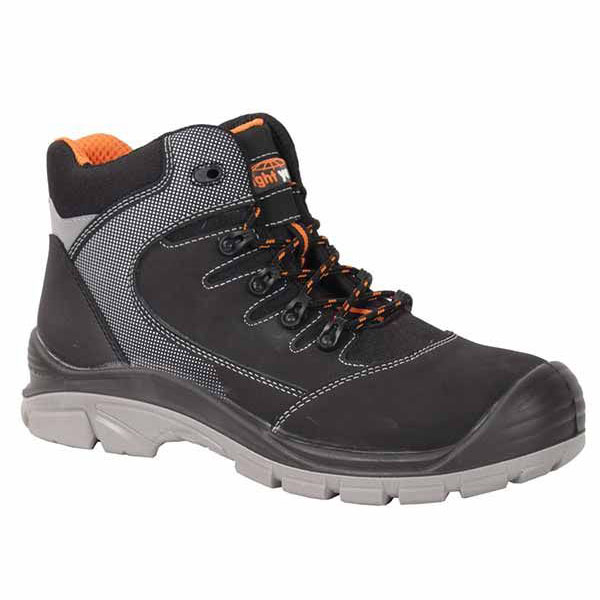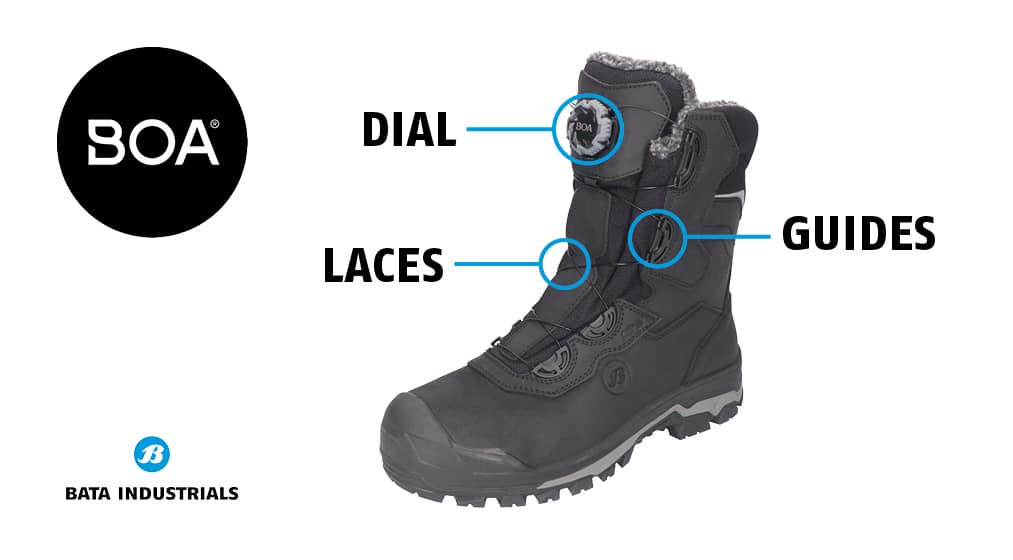Faced with a bewildering list of letters, numbers and unusual terms, as well as new legislation coming into play, you might be forgiven for thinking that you need a degree in Health & Safety legislation to pick the right pair of safety shoes. We’ve put together this jargon busting summary to ensure you won’t be blinded by science. Take the time to read it; your feet, and perhaps your hips and spine too, will thank you.
Let’s start with the key safety regulation: EN ISO 20345.
Footwear designed in accordance with this regulation should offer a minimum level of protection from bumps, crushing, falling or rolling objects, from walking into sharp or pointed objects, heat or cold, and hot substances. The following aspects of the shoe are tested:
- height of the upper
- heel area on boots
- minimum length, pressure and bump impact resistance of the toe cap
- water vapour permeability and water vapour number of the upper
- outsole thickness and abrasion resistance of the outsole
This minimum level is known as SB (Safety Basic). Additional safety measures over and above this are then graded.
Additional Protection levels: S1 to S5.
Extra protection can be built into the design of the shoe to protect against different workplace hazards. Grading the shoe on the following upward sliding scale allows the buyer to know whether the footwear will be appropriate at a glance.
TIP:
Footwear technology has advanced to an amazing level: Have a look at our safety boots – particularly the models from Michelin, Mammoet and Panther which offer fantastic protection.
| Class 1: (made with materials other than all rubber) |
|
S1
|
As SB plus a fully enclosed heel, antistatic properties, energy absorption heel cushioning, fuel resistant soles
|
|
S2
|
As S1 plus water resistance of the upper
|
|
S3
|
As S2 plus penetration resistance and cleated soles for additional traction
|
| Class 2: (made from moulded material or all rubber) |
|
S4
|
As SB plus a fully enclosed heel, antistatic properties, Energy absorbing heel cushioning and resistance to fuel
|
|
S5
|
As S4 plus penetration resistance and cleated soles for additional traction
|
Don’t assume that an S5 boot will protect against every hazard possible: extra protective elements not included in the S grades might cover heat resistance, full waterproofing, metatarsal protection, breathability and insulation. Look for these features separately.
UPDATE:
Changes in European legislation being brought in imminently mean that resistance to fuels will no longer be part of the S1-5 ratings and will instead be labelled separately with the symbol FO. Stronger penetration, or puncture resistance guidelines will also be added:
- P – Steel soles which will withstand a 4.5 mm nail
- PL – Non metallic soles which will withstand a 4.5mm nail
- PS – Non metallic soles which will withstand a 3mm nail
New classes of safety will be added as follows:
|
S6
|
As S5 plus resistance to water penetration and absorption
|
|
S7
|
As S6 plus new puncture resistance measures
|
Slip Testing
Safety shoes are tested on a variety of surfaces to gauge their traction – this is what you want to look for to prevent slips, trips and falls. The following acronyms show that they have met safety requirements for these surfaces:
- SRA – ceramic tiles wetted with dilute soap solution
- SRB – smooth steel with glycerol
- SRC – both the above conditions
UPDATE:
The Slip testing ratings will also be changing imminently – this legislation means that all safety shoes will soon have to conform to the full SRC rating.
What else should you look for?
There are a range of additional safety measures which may be important in protecting from the hazards that you face:
Chart here
 |  |
ESD – Electrostatic Dissipative
Footwear with an ESD rating has an extremely low electrical resistance to prevent strong, electrostatic charges building up, so protecting electrical equipment. These safety trainers offer fantastic support and cushioning at the same time as being EHD rated.
|
Non-Metallic footwear
In some high risk environments, it is important to use footwear with no metal to avoid risk of sparking. Added benefits of non-metallic footwear are that it is lighter and can offer better insulation.
|
Ensuring a good fit
Width fittings
Safety shoes should never be uncomfortable – safe working is reliant upon people feeling comfortable and on top of their game. The correct width fitting can make the difference between safe and healthy working and serious musculo-skeletal effects. Many people with existing health problems from diabetes to congenital issues will benefit from wider fittings. At Anchor Safety we have a good selection of safety footwear in different widths, such as the Bata Walkline or Mammoet ranges.
Closure Systems
Boa lacing - by taking traditional laces out of the equation this system has:

- Locks into place and will not loosen.
- Reduces trip and entanglement hazards.
- Faster to pull on or off.
- Distributes the tension across the foot, leading to a reduction in foot pain.
Ultimately, when you choose a safety shoe or boot, you need to consider the hazards faced in your workplace and choose protection relevant to your risk. These are just a selection of the benefits that you will come across amongst Anchor Safety’s comprehensive range of safety footwear.
Call our Customer Care team on 0800 328 5028 for more information on any of our styles, they will be very happy to help you ensure that your workforce is fully protected against the relevant hazards.
Go to our Safety Footwear range